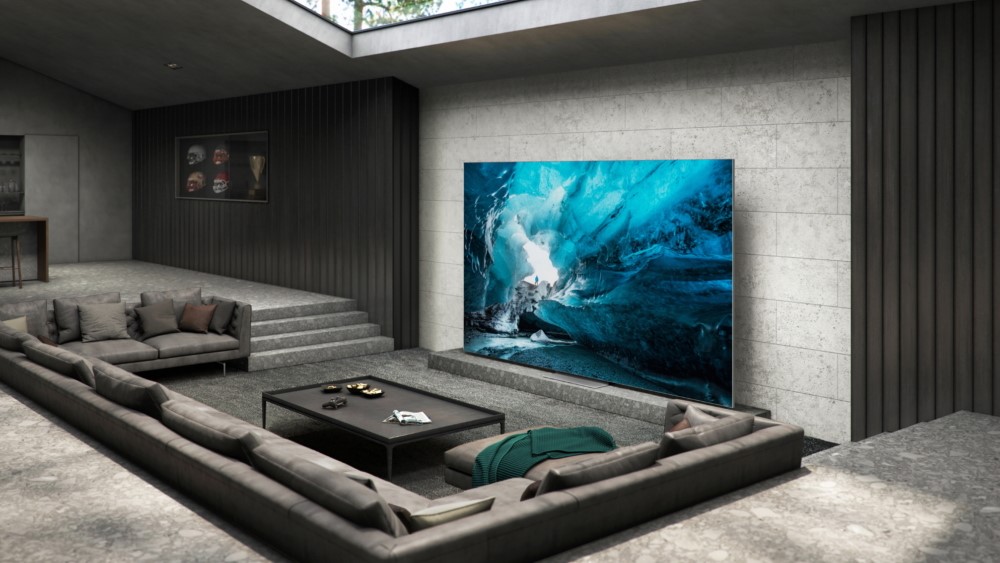Samsung's MicroLED TVs have reportedly been delayed due to manufacturing troubles
Production of its 'small' 89-inch model will be pushed back

Samsung is experiencing production issues with some of its microLED TVs, leading to delays for the launch of its 89-inch and 101-inch models, according to a report in The Elec.
The company had initially announced plans to begin production on the new smaller MicroLED 4K screens in May, for release later this year. However, a source told The Elec that "the production timeline for the 89-inch model has been pushed back to the third quarter of this year while Samsung is yet to decide when it will start production for the 101-inch model."
According to the report, the design of the 89-inch panel requires LED chips that measure 34μm by 85μm, far smaller than those used in larger existing models, which are 75μm by 125μm.
It appears that manufacturing these tiny LED chips and attaching the 11.3 million of them necessary for the 89-inch model just 0.44mm apart is proving more difficult than anticipated. Many chips are becoming defective during the transfer process when they are fixed to the LTPS (low-temperature polycrystalline silicon) backplane, which is resulting in a low yield rate.
Samsung is believed to still be on track to start production of its 99-inch microLED TV during the second quarter of this year, as this model uses the same printed circuit board technology used on the 110-inch version that was launched last year.
For those not yet familiar, MicroLED is a next-gen TV technology that essentially takes the best qualities of OLED and removes more or less all of its shortcomings. Like OLED, each pixel is self-emissive, so one can be completely black while those next to it can be bright white or a vibrant colour, creating incredible contrast.
MicroLEDs can go much brighter than OLEDs, theoretically resulting in even more spectacular contrast. Unlike OLED TVs, which use organic materials ('OLED' stands for 'Organic Light Emitting Diode'), MicroLEDs are inorganic, so they don't degrade and can't suffer from image retention or burn-in.
Get the What Hi-Fi? Newsletter
The latest hi-fi, home cinema and tech news, reviews, buying advice and deals, direct to your inbox.
Samsung’s first unveiled its MicroLED technology with The Wall, demonstrated at CES 2018. At 146-inches and costing an estimated $100,000 (around £73,500 / AU$129,000), it didn't exactly have mass appeal.
But in 2021, the company announced its first consumer MicroLEDs with the more manageable 110-inch MNA110MS1 and 99-inch MNA99MS1 4K models, each costing six figures and requiring professional installation. Despite also promising a 76-inch version, the company settled instead on introducing 89-inch and 101-inch screens for 2022. Pricing for these smaller sizes is still TBC, but reports suggest a cost starting at around $80,000 (around £59,500 / AU$113 500).
The new models will all have a 99.99% screen-to-body ratio with a bevel-free design. Samsung says the technology offers 'best-in-class' picture quality, with up to 25 million micrometre-sized LEDs individually producing light and boasting a 10 per cent wider colour range for heightened clarity and contrast levels. The 2022 MicroLEDs will also support 20-bit greyscale depth, which Samsung claims will yield over 1 million increments of brightness and colour levels to improve HDR delivery.
All 2022 Micro LED models will also feature in-built Dolby Atmos sound with top, side and bottom speakers and ‘Multi-View’, which lets users view content in a split-screen arrangement from any or all of the four HDMI ports in 4K@120Hz.
MORE:
Samsung 2022 TV line-up: everything you need to know
QD-OLED TV: the game-changing new TV tech used by Samsung and Sony
IPS vs VA panel technology: the big LCD tech battle you’ve probably never heard of
Mary is a staff writer at What Hi-Fi? and has over a decade of experience working as a sound engineer mixing live events, music and theatre. Her mixing credits include productions at The National Theatre and in the West End, as well as original musicals composed by Mark Knopfler, Tori Amos, Guy Chambers, Howard Goodall and Dan Gillespie Sells.
